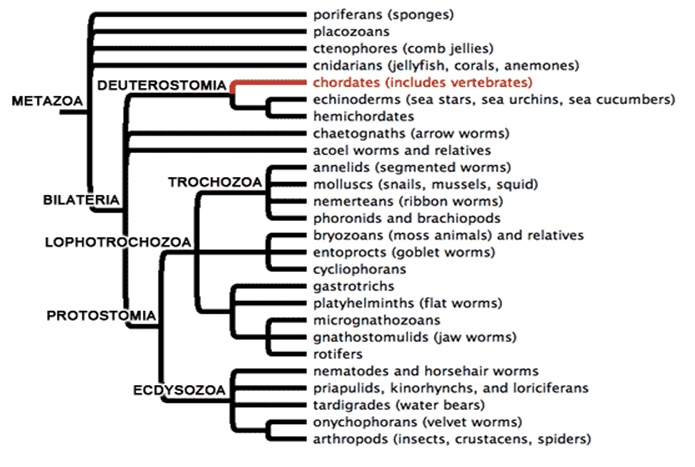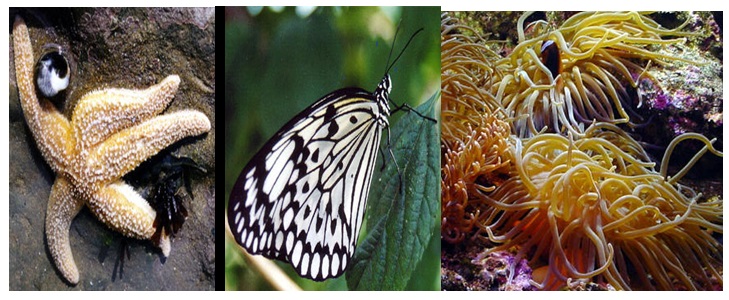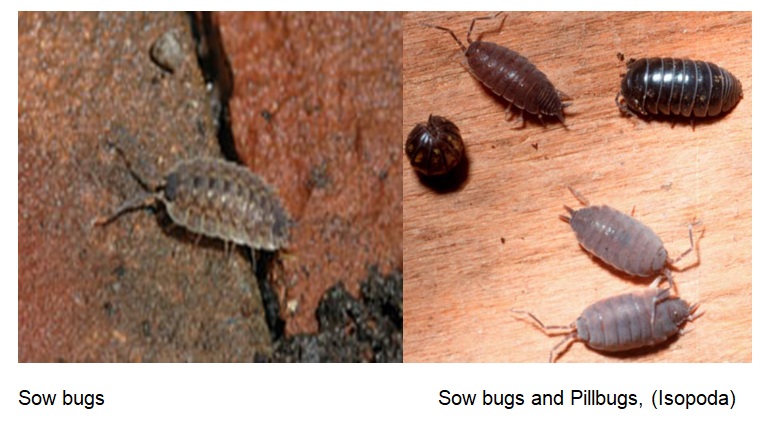Invertebrates are animals that lack backbones – do not possess a vertebral column; they are about 98% of all animals. They are found in different environments, from cold and unbearable regions to equally hot regions even though the complex nervous systems are major impediments to their adaptation to varied regions. Invertebrates have different shapes and colors; they have eight key categories. The groups include arthropods, sponges, cnidarians, Echinoderms, mollusks, roundworms or nematodes, flatworms, and segmented worms (Characteristics of the Invertebrate Groups par. 6). The body temperatures of invertebrates are subject to the degree of coldness or hotness of their surroundings – they are cold-blooded animals. With the high percentage of invertebrates, scientists are finding new species on a daily basis. From a worldwide perspective, the International Union for Conservation of Nature (IUCN) in 2009 identified over 1.4 million invertebrates (Invertebrates par. 3).
The Animal Tree

The pictures below show some common examples of invertebrates.

Sowbugs (Porcellio sp. and Oniscus sp.) are crustaceans, which fall under a major group known as arthropods. Under the arthropods, there are spiders, insects, and crustaceans. They are not insects. Arthropod refers to living organisms with connected limbs on continually sub-divided anatomy. Apart from having equal feet (podes), the Sowbugs have jointed limbs that are attached to a hard-armored exoskeleton. These creatures have oval bodies from a posterior view; they have several coinciding articulating plates on their backs. Just like insects, this example of crustaceans has three body parts: thorax, head, and abdomen (Isopod, Pillbug, Sow Bug Information par. 1). Other identifying features include seven pairs of legs, one protuberant pair of antennae, a pair of appendages referred to as uropods at the end of the abdomen, and simple eyes.
Sowbugs have varied colors, ranging from white to dark gray. Notably, the colors may vary with or without specific patterns. Sow bugs’ antennas are always half the measurement of their anatomies and grow to approximately 15 mm long and 8 mm wide. The adult female Sow bugs have blossoming extensions underneath their limbs; they help in holding developing embryos and eggs. Sow bugs use their mouthparts to rasp and chew food; this example of crustaceans does not like daylight, and, therefore, during such times, they stay in damp dark habitats like leaf litter, logs, and underneath stones. They are scavengers or omnivores that feed on dead animals and plants; some Sowbugs eat live plants and have close relations to shrimp, crabs, and lobsters (Jones par. 4). They are also food for amphibians and reptiles; in their movements, they improve the conditions of soil to a minimal degree by recycling nutrients. Apart from living in moist outdoor regions, they can find their way into houses. All crustaceans, except Sow bugs and pill bugs, live their entire life in oceans; Sow bugs live on land.

The members of the Crustacea Class live in damp basements. In case of a shortage of moisture, these crustaceans perish. Therefore, eradicating moisture from key places in a house is a key prevention method. Plastic vapor barriers, as well as ventilation openings, help in reducing moisture in crawl crevices and cracks (Powell 2). A dehumidifier or an air-conditioner can help in controlling moisture in living basements. The male Sow bugs procreate through parthenogenesis; they are always encompassed in the hatching of offspring; the eggs take from one to two months before brooding out. The female Sow bug keeps the two dozen offspring in their pouches for three to nine days. Upon leaving the pouch, the immature Sow bugs molt for around four to five days at consistent interludes till they mature sexually. The pouch has plates in its basement. The female can have two to three broods annually. The juveniles reach sexual maturity in a year; they have a life span of two years. The molting process takes place in two distinct stages given that a Sowbug sheds half its skin at any given time (Isopod, Pillbug, Sow Bug Information par. 5). At the initiation stage, shedding of the back half of a sow bug takes place after the middle splitting of the membrane. After some days, the front half is shed. During molting, young Sowbugs are extremely helpless; they repeatedly separate themselves from the adults during the flaking periods.
Sowbugs breathe with gills and mostly stay in highly humid regions. Decomposing organic materials such as grass clippings and mulch are the main source of food for this group of invertebrates. According to Powell, they feed on the microorganisms and spore-producing organisms that are common in decaying and lifeless plants and animals (2). Their movement at night makes others nocturnal. Since the Sowbugs are non-locomotive during the day, the night remains the best time for them to scheme out and feed on bedding and seedlings plants, roots and stems of vegetable transplants, animal and plant debris, as well as on tender foliage. The blemish and deform cucumbers that lay on the ground in farms (Potter 1). When they munch on the bacteria and molds that invade the rootstock planes of orchids, destruction occurs. In the process of eating their favorite foods, a proportional amount of roots of orchids and other plants are chewed up. From their destructive nature, they can be a nuisance when they feed on tender plant tissues on indoor ventures. Even with their destructive nature, they are medically harmless.
Since Sowbugs are cold-blooded creatures, the temperature of their body depends on their surrounding. With its survival nature preferring damp locations, Sowbugs survives best in an ideal temperature of between 68 0F and 77 0F – normal room temperature (The Behavior of Sow Bugs par. 7). They die very quickly in the absence of moisture. This makes house environments unfavorable regions for them and pill bugs. If they infest a house in large numbers, diatomic earth dust or boric acid, as well as pyrethrins can be used in the living areas. Even with the high number of infestations, Sowbugs do not transmit diseases, sting, bite, or infest wood, clothing, or food. The presence of these crustaceans is merely a nuisance. According to Powell, a combination of control methods and preventive methods is more effective and lifelong (2). Removing debris in specific areas and elevating immovable objects off the ground are other long-term approaches to controlling Sowbugs. Stones, heavily accumulated mulch, grass clippings, boards, and leaves laying near the foundation are major debris that provides Sow bugs with proper hiding places. Provision of ample ventilation and polyethylene soil shields are the key ways of reducing humidity in crawl spaces.
Works Cited
Characteristics of the Invertebrate Groups. 2009. Web.
Invertebrates. 2002. Web.
Isopod, Pillbug, Sow Bug Information. 2010. Web.
Jones, Susan. Pill Bugs and Sow Bugs. 2011. Web.
Potter, Michael. Sowbugs and Pillbugs. 2013. Web.
Powell, Peggy. Sowbugs and Pillbugs. 2000. Web.
The Behavior of Sow Bugs. 2014. Web.
